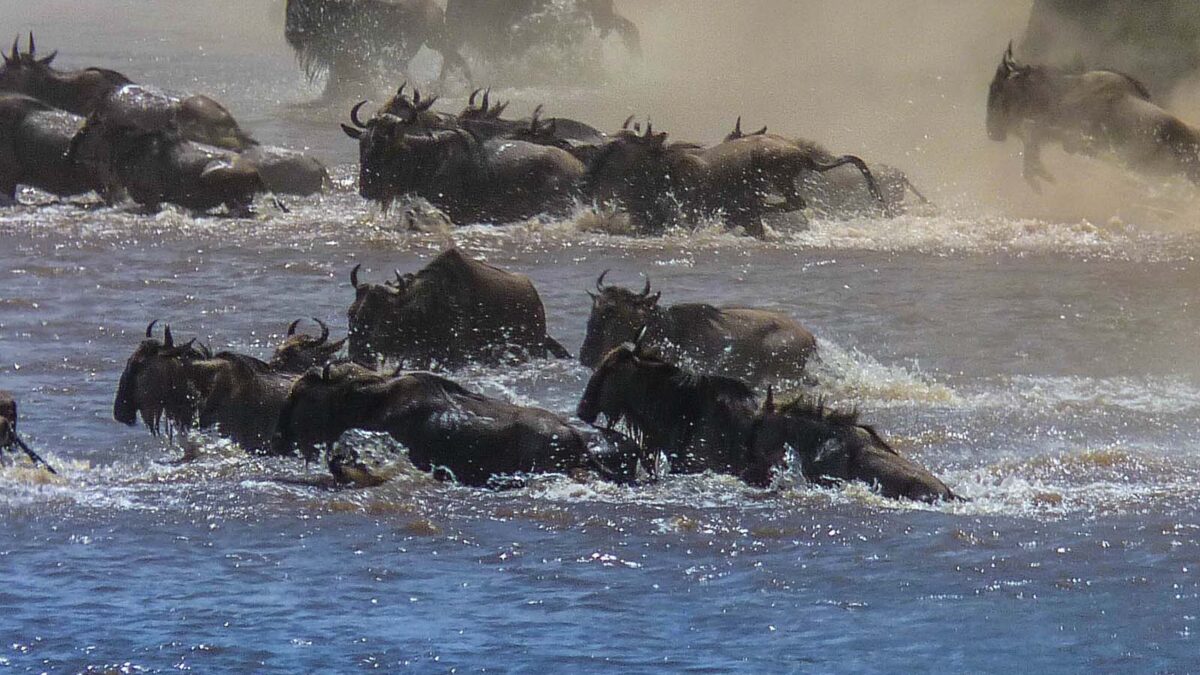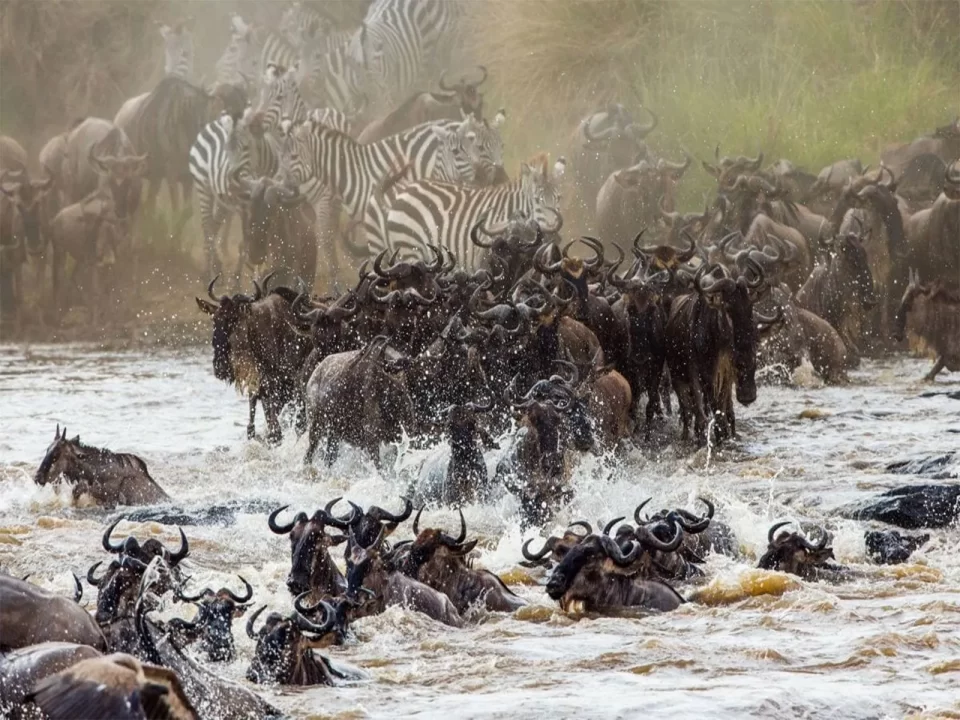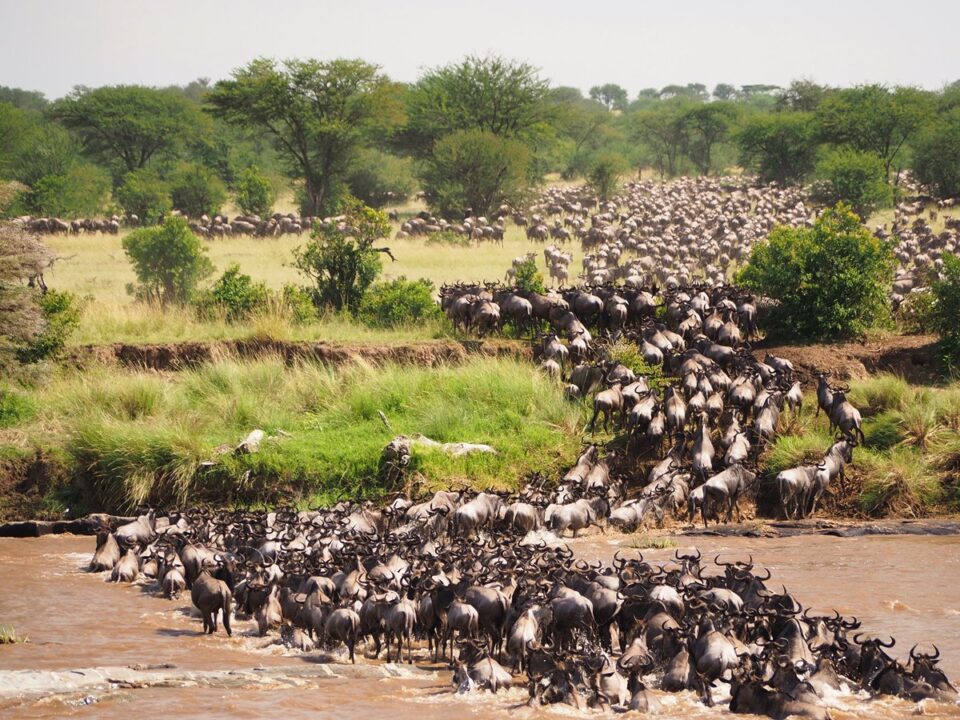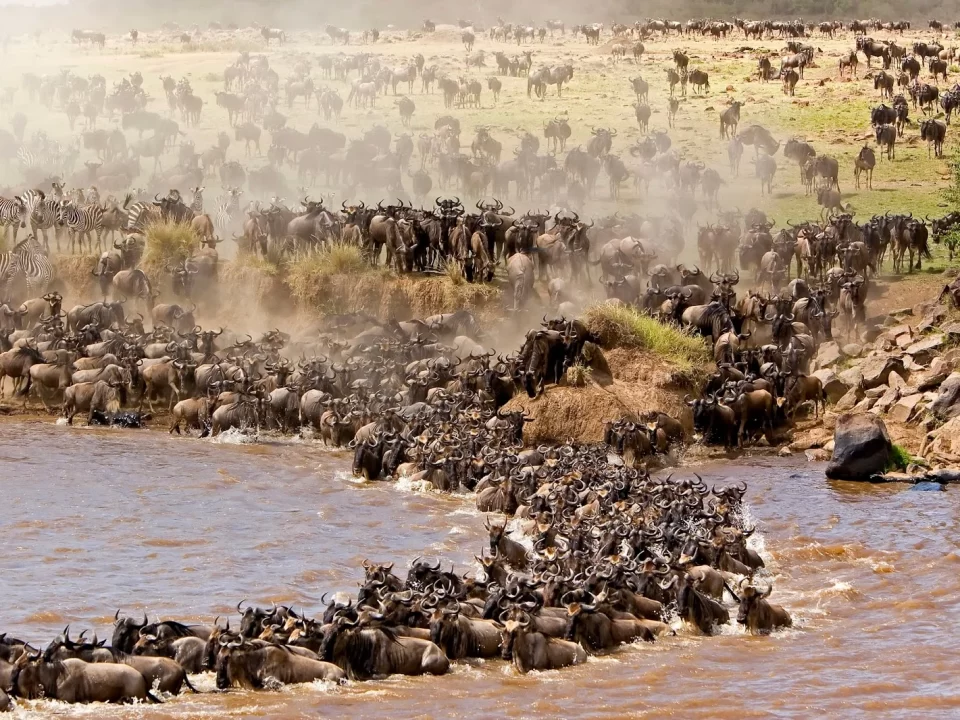Planning a Great Wildebeest Migration Safari in Africa

Best Time to witness Serengeti Wildebeest Migration
January 20, 2024
Fishing Permits for Nile Perch fishing in Murchison falls
January 20, 2024Planning a Wildebeest Migration Safari in Africa’s Serengeti and Masai Mara
Planning a Great Wildebeest Migration Safari in Africa — Embarking on a wildebeest migration safari is a thrilling endeavor, especially for first-time travelers seeking to witness one of Africa’s most spectacular wildlife events. To ensure an unforgettable experience, it is crucial to plan meticulously, considering where to go, when to go, where to stay, and the duration of your stay. Many tour operators may lead you astray, but armed with our wildebeest hard tracker information obtained directly from the ground in Masai Mara and Serengeti, we provide invaluable insights. From July to October, the wildebeest migration reaches its zenith, with a massive movement of ungulates crossing between the vast plains of Serengeti and Masai Mara, driven by the search for water and nutrient-rich grass.
The Magnificent Predators of Serengeti: A Host to Unparalleled Wildlife Spectacles
During the wildebeest migration, Serengeti National Park becomes the stage for some of the most significant predator sightings in all of Africa. Lions, cheetahs, leopards, hyenas, and Nile crocodiles in the Mara River create a dramatic backdrop, making this migration a truly awe-inspiring spectacle.
Mara River Crossing: A Guided Safari through Kenya’s Masai Mara and Tanzania’s Serengeti
Kenya’s Masai Mara and Tanzania’s Serengeti provide the setting for the grandest wildlife shows in the entire Animal Kingdom. Our expert Africa travel consultants take pride in guiding you on planning a safari to witness the Mara River crossing, tailoring an experience that ensures you capture the essence of this migration.
Where and When to Go
Determining where to go during the wildebeest migration safari is a challenge due to the absence of specific crossing points across the Mara River’s 395 km stretch between Tanzania’s Serengeti National Park and Kenya’s Masai Mara. However, our experts recommend the Ndutu plains and Kogatende area as prime locations to witness this annual phenomenon. Each year, the wildebeest choose different crossing points, making these areas ideal for a safari in Kenya and Tanzania.
As for the timing, the wildebeest migration occurs year-round and is categorized into three stages: the calving season from mid-February to March, the rutting season between May and April, and the Mara River crossing from July to October.
Crafting Your Safari Itinerary: Tailored Experiences for the Great Wildebeest Migration
Explore suggested itineraries for the Great Wildebeest Migration in East Africa, curated to offer a comprehensive experience of this natural wonder.
Choosing Your Abode: Ideal Accommodations for a Wildebeest Migration Safari
The best places to stay during the wildebeest migration include the Ndutu area and the western corridor in Tanzania, as well as the Narok region in Masai Mara. Lodges such as Ndutu Luxury Tented Camp, Chaka Safari Camp, and Porine Lion Camp offer unparalleled comfort and proximity to the migration’s key moments.
Duration of Your Stay: Maximizing the Wildlife Encounter
While it’s possible to witness the wildebeest migration in a single day, a recommended week-long stay between Serengeti and Masai Mara increases your chances of experiencing the Mara River crossing. This extended duration also allows for encounters with the abundant wildlife within this massive ecosystem.
Investment in Nature: Wildebeest Migration Safari Prices
The estimated price for a wildebeest migration safari ranges from USD 3800 to 10,000, catering to various budget preferences. Options include budget, mid-range, and upmarket stays during this awe-inspiring event.
In Conclusion: A Holistic Safari Experience
In conclusion, our expert perspective emphasizes the importance of combining both Serengeti and Masai Mara in your wildebeest migration safari. Ndutu Plains stand out as a top-notch location within Serengeti, offering a front-row seat to the great migration. Additionally, we recommend combining your adventure with a gorilla trekking safari in either Uganda or Rwanda, enabling our safari consultants to optimize your itinerary for the Mara River crossing and other remarkable moments.




